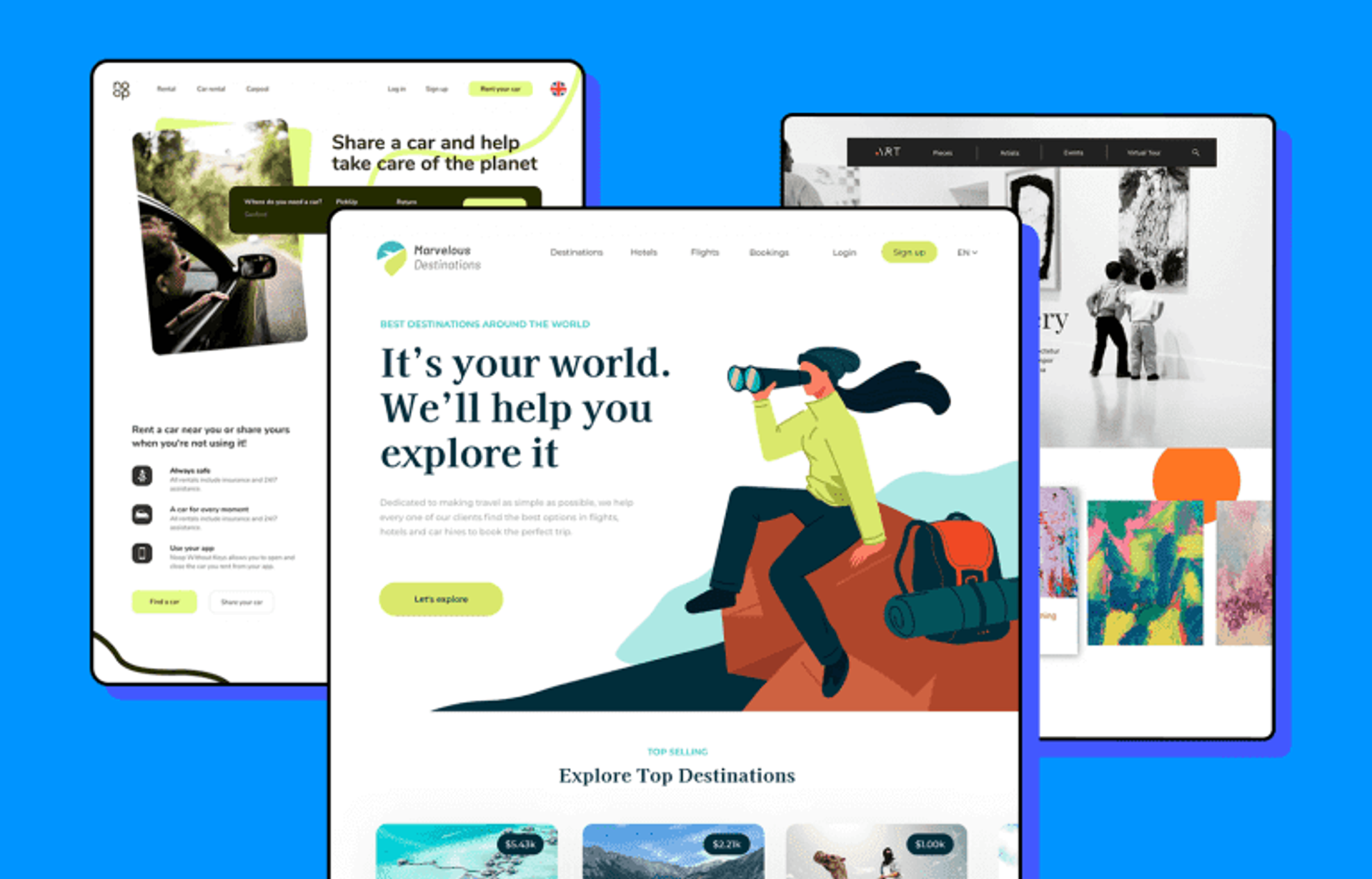SEO Marketing Las Vegas Focusing on You Connect with Your Target Audience
SEO Marketing Las Vegas Focusing on You Connect with Your Target Audience
Blog Article
Imaginative Web Style Solutions for Modern and Engaging Websites
In the world of internet layout, the quest of contemporary and appealing options has ended up being progressively important for companies aiming to capture customer focus. By incorporating strong color schemes, interactive elements, and receptive formats, developers can produce experiences that not only resonate with customers yet likewise improve brand identification.
Welcoming Strong Color Design
In internet style, the tactical use vibrant shade plans can considerably enhance customer interaction and brand identification. By utilizing dynamic shades, developers can develop visually striking websites that record interest and foster a remarkable experience. A well-chosen shade combination not only mirrors a business's worths however also stimulates particular feelings that can influence individual behavior.
Vibrant colors can be used to direct users' interest to crucial elements such as contact us to activity, improving conversion prices. Making use of contrasting colors for switches and links can make these aspects stand out, motivating users to engage more easily. A natural shade system throughout the site reinforces brand acknowledgment, creating a sense of familiarity and depend on amongst site visitors.
Nevertheless, it is critical to balance strong shades with ample white space to avoid overwhelming individuals. Efficient usage of typography also complements bold colors, making sure readability while keeping aesthetic allure. Ultimately, embracing bold color pattern in web style not just boosts visual top quality yet additionally plays an integral role in achieving tactical company objectives, making it a vital consideration for contemporary web development.

Using Interactive Elements
Interactive aspects are important in modern-day website design, as they dramatically enhance customer interaction and develop a much more vibrant searching experience. By including functions such as computer animations, hover results, and clickable elements, internet sites can encourage individuals to explore material more extensively and return for future check outs.

Micro-interactions, such as refined animations when a button is clicked or a form is sent, can additionally improve the individual experience by offering immediate responses. These tiny information can make the site feel even more receptive and to life, fostering a feeling of link between users and the website.
Additionally, gamification components, such as benefits for finishing certain activities, can inspire customers to engage with the web content much more deeply. By attentively integrating these interactive parts, web developers can create an unforgettable and engaging on the internet experience that reverberates with users and motivates them to return.
Implementing Receptive Layout
Executing receptive design is important in today's multi-device landscape, ensuring that sites give an optimal viewing experience throughout numerous screen sizes. As customers increasingly access the web with smart devices, tablets, and desktops, a one-size-fits-all strategy is no longer practical. Receptive layout enables smooth navigating and communication, adjusting design and web content to fit the tool being utilized.
Trick principles of receptive style include liquid grids, flexible images, and media questions. Fluid grids use relative systems, such as percents, instead of fixed pixels, allowing aspects to resize proportionately. Versatile pictures range within their containing elements, avoiding overflow and preserving aesthetic stability. Media inquiries assist in the application of various designs based on the gadget's attributes, such as size, height, or resolution, enabling designers to tailor the user experience efficiently.
Furthermore, responsive design boosts search engine optimization performance, as search engines favor mobile-friendly visit this site right here websites. By carrying out responsive design, organizations not just enhance user contentment and involvement however also raise their reach in an affordable digital landscape. As technology proceeds to develop, adopting receptive style has come to be an essential practice for any type of modern and interesting web site.
Integrating Multimedia Web Content
Multimedia material plays a vital function in creating interesting and dynamic internet experiences that catch users' interest and enhance understanding. By incorporating text, photos, audio, and video clip, sites can supply a richer narrative that attract different learning designs and preferences. This combination not only boosts customer interaction Look At This yet also help in sharing complex concepts succinctly.
Incorporating top notch images and infographics can separate textual web content, making it more digestible. In a similar way, video tutorials and presentations can give in-depth insights that fixed web content may not completely connect. Audio aspects, such as podcasts or history songs, can also improve the ambience of an internet site, creating a much more immersive experience.
Additionally, the strategic use of multimedia can improve search engine optimization performance, as online search engine prefer varied web content kinds, increasing visibility. It is essential to guarantee that multimedia aspects do not impede page load times, as this can lead to user aggravation. By balancing multimedia integration with efficiency factors to consider, internet developers can produce visually appealing and functional websites that reverberate with customers, promoting a deeper connection and motivating return brows through.
Focusing On Individual Experience

To attain an optimum individual experience, designers should focus on several vital concepts. Clear phone calls to action, readable typography, and organized web content overview individuals, decreasing cognitive load.
Ultimately, focusing on UX not just raises customer fulfillment yet likewise drives involvement and conversion rates, making it an essential aspect of modern-day web style strategies. By putting customers at the center of style initiatives, sites can develop lasting, favorable impacts that encourage return sees.
Conclusion
To conclude, modern-day web style remedies that emphasize strong shade systems, interactive elements, responsive style, and multimedia web content significantly improve customer involvement and complete satisfaction. Prioritizing individual experience via clear layouts and continuous comments additionally adds to boosted conversion rates. By adopting these techniques, web sites can properly astound visitors and reinforce brand identity, ultimately resulting in a much more vibrant and appealing on the internet existence. The assimilation of these design principles is important for achieving contemporary website design objectives.
Report this page